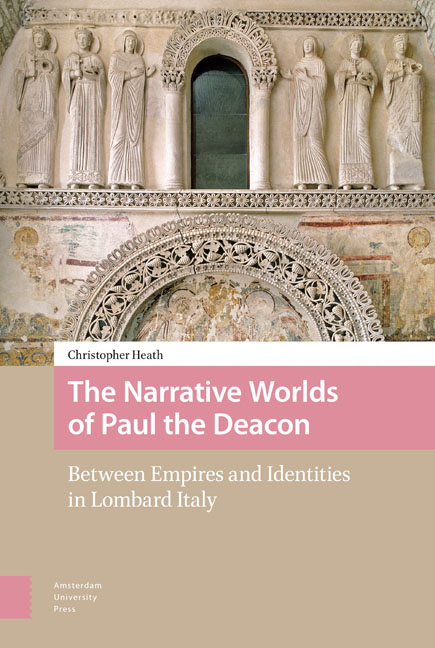Book contents
- Frontmatter
- Dedication
- Contents
- List of Tables and Diagrams
- Acknowledgements
- List of Abbreviations
- Introduction
- 1 Vir valde Peritus: Paul the Deacon and his Contexts
- 2 The Early Narratives
- 3 The Historia Langobardorum: The Structure of Paul’s World
- 4 The Historia Langobardorum: The Six Books in Detail
- 5 Conclusion
- Bibliography
- Index
- Frontmatter
- Dedication
- Contents
- List of Tables and Diagrams
- Acknowledgements
- List of Abbreviations
- Introduction
- 1 Vir valde Peritus: Paul the Deacon and his Contexts
- 2 The Early Narratives
- 3 The Historia Langobardorum: The Structure of Paul’s World
- 4 The Historia Langobardorum: The Six Books in Detail
- 5 Conclusion
- Bibliography
- Index
Summary
As part of his memorable first chapter in Book I of the Historia Langobardorum, Paul observes:
Pari etiam modo ex Winnilorum, hoc est Langobardorum gens, quae postea in Italia feliciter regnavit, a Germanorum populis originem ducens, licet at alias causae egressionis eorum asseverentur, ab insula quae Scadinavia dicitur adventavit.
In like manner also the race of Winnili, that is of Langobards, which afterwards ruled prosperously in Italy, deducing its origins from the German peoples, came from the island which is called Scadinavia, although other causes of their emigration are also alleged.
Whether the work succeeds in demonstrating that the Lombards did indeed in Italia feliciter regnaverunt remains an open question and one that is not entirely resolved by a careful reading of the entire work or by the content of the narrative. Throughout this study, we’ve considered not only Paul's statements, but also his structural arrangements.
The main purpose of this study has been to consider the narrative arrangements of Paul's four prose narratives. This has required detailed description of the texts as they stand and the components or building blocks that Paul used to create his works. Paul's progress as a writer and his ability to produce works to order is charted through these narratives. In the first of these, the Historia Romana, we see a direct patronal relationship with Adelperga, wife of Arichis II of Benevento and daughter of Desiderius, and how this connection fashioned Paul's compositional agenda. The first ten books of the Historia Romana, whilst predominantly the work of Eutropius, include useful and interesting interpolations on Paul's part. The lightness of his touch when editing the original structure that allowed him not only to link the text to the Judaeo-Christian tradition, but also to apply further information and interpolations from Mediterranean history, was a noticeable feature of this part of the work. More significant, however, as an example of the independence of his thought and his development as a writer are the additional six books he grafted onto the Eutropian core. Here we see a situation that is repeated throughout all four works. Paul ‘writes’ to his available material: in other words, he is guided by what he has at hand.
- Type
- Chapter
- Information
- The Narrative Worlds of Paul the DeaconBetween Empires and Identities in Lombard Italy, pp. 253 - 256Publisher: Amsterdam University PressPrint publication year: 2017



